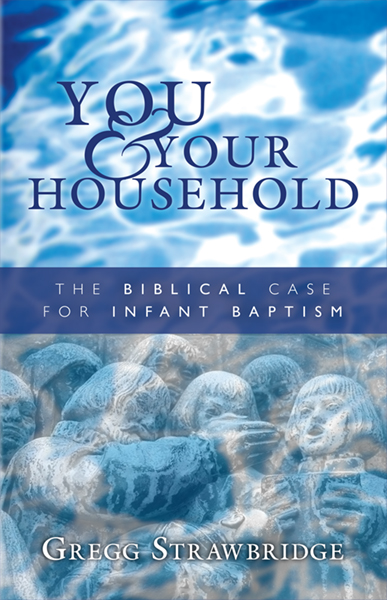What is the appeal of icons in the East? How should we as Christians handle this matter of icons? What does the Bible teach us about icons?
The Bible does in fact speak of icons. The English word “icon” comes from the Greek word “εἰκών”. The Greek word simply means “image” or “likeness”. So here is a theology of iconography in Protestantism, with some refutations of other ideas. You can find a list of Bible verses that use the Greek word “εἰκών” – here. I plan to focus on key concepts in the Bible related to iconography or the study of icons in the Bible.
Just as a side note – here is an interesting article on Theopolis Institute from John Carpenter on some of the history of iconography. My interest in this short newsletter is mainly in the apostolic teaching on icons as testified to in Holy Scripture.
Jesus is the icon or image of God
You will read this in Colossians 1:15: “He is the image of the invisible God, the firstborn of all creation.” You will also read in 2 Corinthians 4:4: “In their case the god of this world has blinded the minds of the unbelievers, to keep them from seeing the light of the gospel of the glory of Christ, who is the image of God.”
So Jesus is the image or “εἰκών” of God. He is God, the Son of God, the second person of the blessed unity in Trinity and Trinity in unity. As we read in 2 Corinthians 4:6: “For God, who said, “Let light shine out of darkness,” has shone in our hearts to give the light of the knowledge of the glory of God in the face of Jesus Christ.” As Christians we see the beauty and glory and majesty of the Triune God in the face of Jesus Christ. We know the Triune God in the face of Jesus Christ and we see His face in the pages of Holy Scripture.
The Church is the Icon or Image of Jesus
You will read this in Romans 8:29: “For those whom he foreknew he also predestined to be conformed to the image of his Son, in order that he might be the firstborn among many brothers.” The very language of the Church as the “Body of Christ” indicates that the true church is the very icon of Christ on earth (Romans 12:5, 1 Corinthians 12:12-27, Ephesians 1:22-23, 3:6, 4:15-16 and 5:23, Colossians 1:18 and 1:24). Christ continues to show His incarnate glory through the church that faithfully worships Him and follows in His footsteps.
This is why we see language in Scripture, such as the language of 2 Corinthians 3:18: “And we all, with unveiled face, beholding the glory of the Lord, are being transformed into the same image from one degree of glory to another. For this comes from the Lord who is the Spirit.” Or Colossians 3:9–10: “Do not lie to one another, seeing that you have put off the old self with its practices and have put on the new self, which is being renewed in knowledge after the image of its creator.”
Where Worship is Directed
Worship is directed towards the Triune God, who is revealed to us in the face of Jesus Christ. This does not mean that we are praying towards a painted image or statue which may or may not represent Jesus accurately (in fact, we must not), but to the Lord Jesus Christ who is revealed to us in the Holy Scriptures.
This is reflected first negatively in the prohibition of the 2nd commandment (not the second half of the first commandment), which states:
“You shall not make for yourself a carved image, or any likeness of anything that is in heaven above, or that is in the earth beneath, or that is in the water under the earth. You shall not bow down to them or serve them, for I the LORD your God am a jealous God, visiting the iniquity of the fathers on the children to the third and fourth generation of those who hate me, but showing steadfast love to thousands of those who love me and keep my commandments.” (Exodus 20:4-6)
Of course Christians are allowed and even encouraged to ask other Christians or the elders of the church or the church as a corporate body to pray for them, as well as to voluntarily cry out to God for others (James 5:13-18, Eph. 6:18). But we don’t pray to the church, or genuflect before the church in an act of worship. Rather, we pray before and to God alone. It should also be noted that I can ask my wife to pray when she is in the same room, but given the limitations on those who are human and not divine, she cannot hear me when she is elsewhere (unless of course, I am talking to her on the phone or Skype). On the other hand, the Bible demonstrates clearly that we can and must direct our prayers to God who is everywhere and all powerful.
And there is the positive. Scripture is constantly calling on the Christian Church to cry out to God as a Father, asking for the work of the Holy Spirit in our hearts, and seeking salvation in the blood and righteousness of Jesus Christ alone. That’s the beauty of it all. While Mary and Jael are indeed supposed to be honored in Scripture as “the most blessed among women”, yet they cannot hear our prayers. For that reason, Scripture never calls on us to prayer to them and instead forbids it. But God can hear all our prayers and it is to the Triune God that we direct all of our prayers and our praises.
So What about Beauty?
When I look at a glorious sunset or a mountain range or the vast ocean, I am brought to praise the living God as I find is supposed to happen in passages like Psalm 19. But I do not praise or pray to the glorious sunset or the mountain range or the vast ocean.
Similarly, the second commandment does not forbid beauty in the architecture of churches. The church should go ahead and build soaring cathedrals with glorious stained glass windows, but they must guard against the heart which is an idol making factory, and seek their help from God and not from stones and bricks and mortar.
So beauty is not a problem and was not a problem to the reformers.
We should try to understand most charitably the work of the iconoclasts. There may have been iconoclasts at the time of the Reformation who were tearing down statues and removing stained glass windows in a spirit of evil. But I’m sure that there were others who had seen the vast idolatry of that time, and it was not so much that they hated beauty, they could not enter a church building without their hearts being turned away from the true worship of God. So it was not so much a hatred of beauty as it was a hatred of idolatry, an idolatry that the culture of that time was steeped in.
Beauty is good. My wife is an artist, and I married her in part, because she makes beautiful things and I found that utterly jaw-dropping and incredible in a wife. But we do not worship beautiful things, rather, we worship God who is the source of all beauty.
The Preaching of the Word & the Administration of the Sacraments
God has ordained that it is through the preaching of the Word and the administration of the sacraments that He communicates grace to a battle weary people. You will also see that the Presbyterians (I come from a continental dutch reformed tradition) also include prayer among the means of grace. God wants His Word to be taught faithfully and the sacraments to be administered faithfully in the church. It is in the context of the gathered church as it seeks to assemble faithfully in obedience to Christ that we learn more about who Christ is. We should not resort to dumb images, that can neither speak nor tell us about who God is.
In Summary
Jesus is the image or icon of God. The church is the image or icon of Jesus. We worship the Triune God and we worship Jesus who brings us to see the full-orbed beauty of the Triune God. The Church must hear the Word preached, receive the sacraments, submit to the discipline and admonition and encouragement of the church, and offer up prayers and praise to the glorious Trinity in unity and unity in Trinity. It is in this way that we are transformed into His image weekly and even daily. We must not eclipse God’s means of worship with idols of our own making that cannot speak and cannot talk.
Photo by Andriy Tod on Unsplash
Read more






















